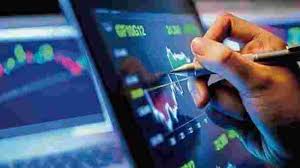CFD trading is a popular way to speculate on the prices of financial instruments, such as indices, stocks, commodities and currencies. In Singapore, CFD trading is offered by several local and international brokers. CFD trading is a leveraged product, meaning traders can control a significant position with relatively small capital. It can result in significant profits, but you can also magnify your losses. Therefore, traders need to understand the risks involved in CFD trading and use risk management tools to protect their capital.
The underlying market
The first factor traders should consider when trading CFDs is the underlying market. They need to understand how the market works and what factors can affect prices. For example, if they are trading a CFD on the US stock market, they need to be aware of factors such as earnings releases, economic data and geopolitical events that could impact share prices.
Margin
Margin is how much money traders need to open a CFD position. When trading with leverage, traders only need to put up a small percentage of the total value of the trade as a margin. For instance, if a trader buys SGD100,000 worth of shares and the broker offers 50:1 leverage, they would only need to put up SGD2,000 as a margin. It allows traders to control significant positions with relatively little capital. However, it also means that they can magnify their losses and quickly find themselves owing money to their broker if the market moves against them.
Spreads
The spread is the difference between a CFD’s bid and ask prices. When trading, traders need to consider the spread as it will impact their profits and losses. For example, if a trader buys a CFD at the ask price of SGD1.50 and sells it at the bid price of SGD1.49, they will make a loss equal to the spread (SGD0.01). Therefore, traders must consider spreads and stop losses when setting their profit targets.
Commission
Some brokers charge commission on trades, while others only make money from the spread. Traders must consider whether they are willing to pay commission when selecting a broker. Commission can eat into profits, so traders need to factor this into their trading plans.
Order types
There are a variety of order types that can be used when trading CFDs. The most common are market orders, limit orders and stop-loss orders. Market orders are typically filled at the current market price, while limit orders allow traders to specify the price they want to buy or sell. Stop-loss orders protect against losses by automatically selling a CFD when it reaches a specific price.
Risk management
Risk management is an essential factor to consider when trading CFDs. Traders need to use stop-losses and take-profit levels to protect their capital. They also need to consider their risk-to-reward ratio when setting these levels. A risk-to-reward ratio of 1:3 means that for every SGD1 at risk, the trader aims to make SGD3 in profits.
Trading platform
The trading platform is the software traders use to place orders and manage their positions. Trading platforms vary in terms of features and usability. Some brokers offer proprietary platforms, while others offer popular third-party platforms such as MetaTrader 4. When choosing a broker, traders should consider the features and usability of the platform they offer.
Customer service
Customer service is vital for any trader but essential for those new to CFD trading. When starting, traders will likely have many questions and will need a broker willing to answer them. Traders should also consider the availability of customer service. Some brokers only offer customer service during business hours, while others offer 24/7 support.
Demo accounts
A demo account enables traders to practice trading with virtual money, giving new traders an opportunity to familiarise themselves with the market and the platform they will use. Demo accounts also allow experienced traders to test new strategies before risking their capital. Most brokers offer demo accounts, so traders should take advantage of this before trading with real money.
You can visit the company website for more information.










